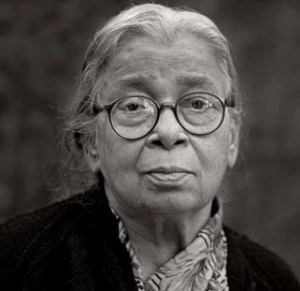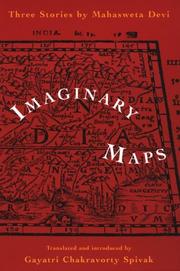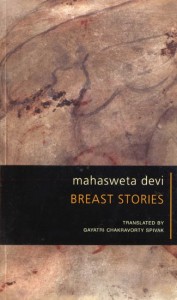Biography

Mahasweta Devi was born in 1926 in the city of Dacca (now Dhaka) in East Bengal (modern-day Bangladesh). As an adolescent, she and her family moved to West Bengal in India. Born into a literary family, Mahasweta Devi was also influenced by her early association with Gananatya, a group who attempted to bring social and political theater to rural villages in Bengal in the 1930s and 1940s. After finishing a master’s degree in English literature from Calcutta University, Devi began working as a teacher and journalist. Her first book, Jhansir Rani (The Queen of Jhansi), was published in 1956. This work also marked the beginning of a prolific literary career. In the next half-century, Devi published twenty collections of short stories and close to a hundred novels, primarily in her native language of Bengali. She was also a regular contributor to several literary magazines such as Bortika, a journal dedicated to the cause of oppressed communities within India. In 1984, she retired from her job as an English lecturer at a Kolkata university to concentrate on her writing. Devi was the recipient of several literary prizes. She was awarded the Jnanpath, India’s highest literary award in 1995. In the following year, she was one of the recipients of the Magsaysay award, considered to be the Asian equivalent of the Nobel Prize. She passed away in July 2016 in her home of many years, Kolkata, India.
Major Works and Themes

Mahasweta Devi’s first work, Jhansir Rani, was a fictional reconstruction of Laxmibal, the ruler who died fighting the British Author army in the mid-nineteenth century. Several of her other early works such as Amrita Sanchay (1964) and Andhanmalik (1967) are also set during the British colonial period. The Naxalite movement of the late 1960′s and early 1970′s were also an important influence in her work. Devi, in a 1983 interview, points to this movement as the first major event that she felt “an urge and an obligation to document” (Bandyopandhyay viii). This leftist militant movement, which started in the Naxalbari region of West Bengal, began as a rural revolt of landless workers and tribal people against landlords and moneylenders. In urban centers, this movement attracted participation from student groups. Devi’s Hajar Churashir Ma (Mother of 1084) is the story of a upper middle class woman whose world is forever changed when her son is killed for his Naxalite beliefs. This book has recently been made into a Hindi-language movie called Hazaar Chaurasi ki Ma by director Govind Nihalani (see Writers and Filmmakers of the Indian Subcontinent).

Another important theme in the works of Mahasweta Devi involves the position of tribal communities within India. She is a long-time champion for the political, social and economic advancement of these communities, whom she characterizes as “suffering spectators of the India that is traveling towards the twenty first century” (Imaginary Maps, xi). These concerns can be seen in works such as Aranyer Adhikar (Rights of the Forest) and anthologies such as her 1979 Nairhite Megh (Clouds in the Southwestern Sky). Aranyer Adhikar, which was published in 1977, is based on the life of Birsa Munda, a tribal freedom fighter. She donated the prize money from both the Jnanpath and Magsaysay awards to tribal communities and continues to use her work to further the position of these groups in India (see Globalism and Transnationalism).
This activism is central to Devi’s understanding of the role of a writer in society: “I think a creative writer should have a social conscience. I have a duty towards society. Yet I don’t really know why I do these things. The sense of duty is an obsession. I must remain accountable to myself.”
Gayatri Chakravorty Spivak, who has translated two collections of Devi’s stories including those in Imaginary Maps into English, suggests that this interplay of activism and literary writing in Devi’s fiction can be of substantial interest to current academic discourse and practices. Spivak insists that Devi’s work suggests a model in which activism and writing can reflect upon each other, providing a necessary vision of inter-nationality, and the possibility of constructing a new kind of responsibility for the cultural worker (Imaginary Maps, xxvi).
In response to the question, “What would you like to do for the rest of your life?” in a 1998 interview, Devi replied: “Fight for the tribals, downtrodden, underprivileged and write creatively if and when I find the time” (Guha). Devi also acted as an editorial advisor for Budhan: The Denotified and Nomadic Tribes Rights Action Group Newletter. The newsletter is named after Budhan Sabar who was brutally killed in March 1998.
Selected Major Works
Devi wrote over 100 novels and over 200 volumes of short stories, primarily in Bengali. Below are some of her major works that have been translated into English.
- Jhansir Rani/The Queen of Jhansi (1956)
- Imaginary Maps (1995)
- Old Woman (1997)
- The Breast Stories (1997)
Major Awards
- 1979: Sahitya Akademi Award (Bengali) for Aranyer Adhikar.
- 1986: Padma Shri
- 1996: Jnanpith Award
- 1997: Ramon Magsysay Award for Journalism, Literature and the Creative Communication Arts
- 1999: Honoris causa from the Indira Gandhi National Open University
- 2006: Padma Vibhushan
- 2010:Yashwantrao Chavan National Award
- 2011: Bangabibhushan
- 2012: Hall of Fame Lifetime Achievement SAHITYABRAMHA
Related Sites
Interview with Mahasweta Devi
http://www.rediff.com/news/dec/24devi.htm
Outlook Magazine Interview
http://www.outlookindia.com/article.aspx?202850
The Rediff Interview
http://www.rediff.com/news/dec/24devi.htm
Works Citied
- Bardhan, Kalpana. “Introduction”. Of Women, Outcastes, Peasants,and Rebels. Los Angeles: University of California Press, 1990.1-50.
- Bandypadhyay, Samik. “Introduction.” Five Plays. Calcutta: Seagull Books, 1986. v-xxx.
- Spivak, Gayatri Chakravorty. “The author in conversation.” Imaginary Maps. New York: Routledge Books,1995. ix-xxiii.
Author: Shibani Baksi, Spring 1998.
Last edited: May 2017